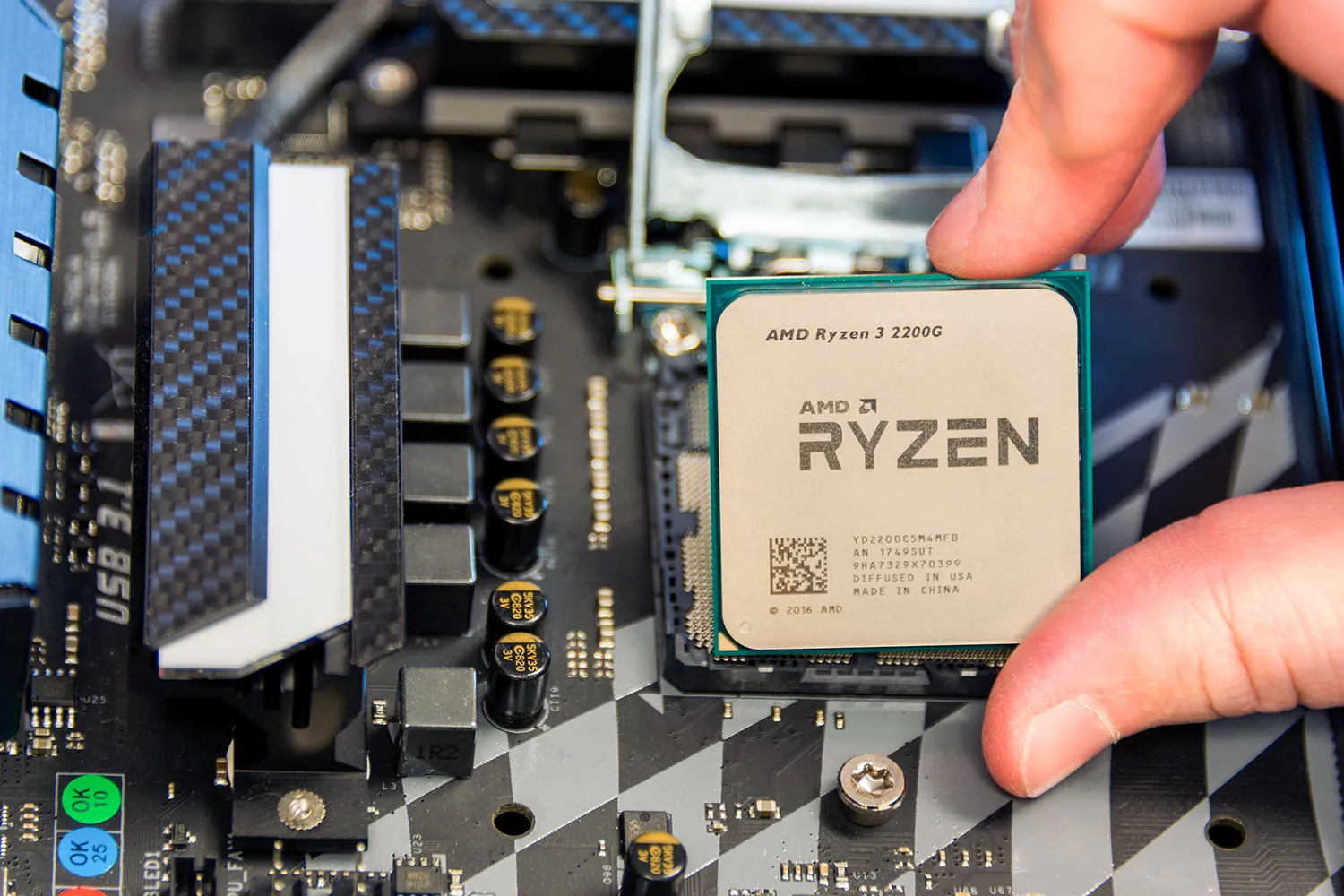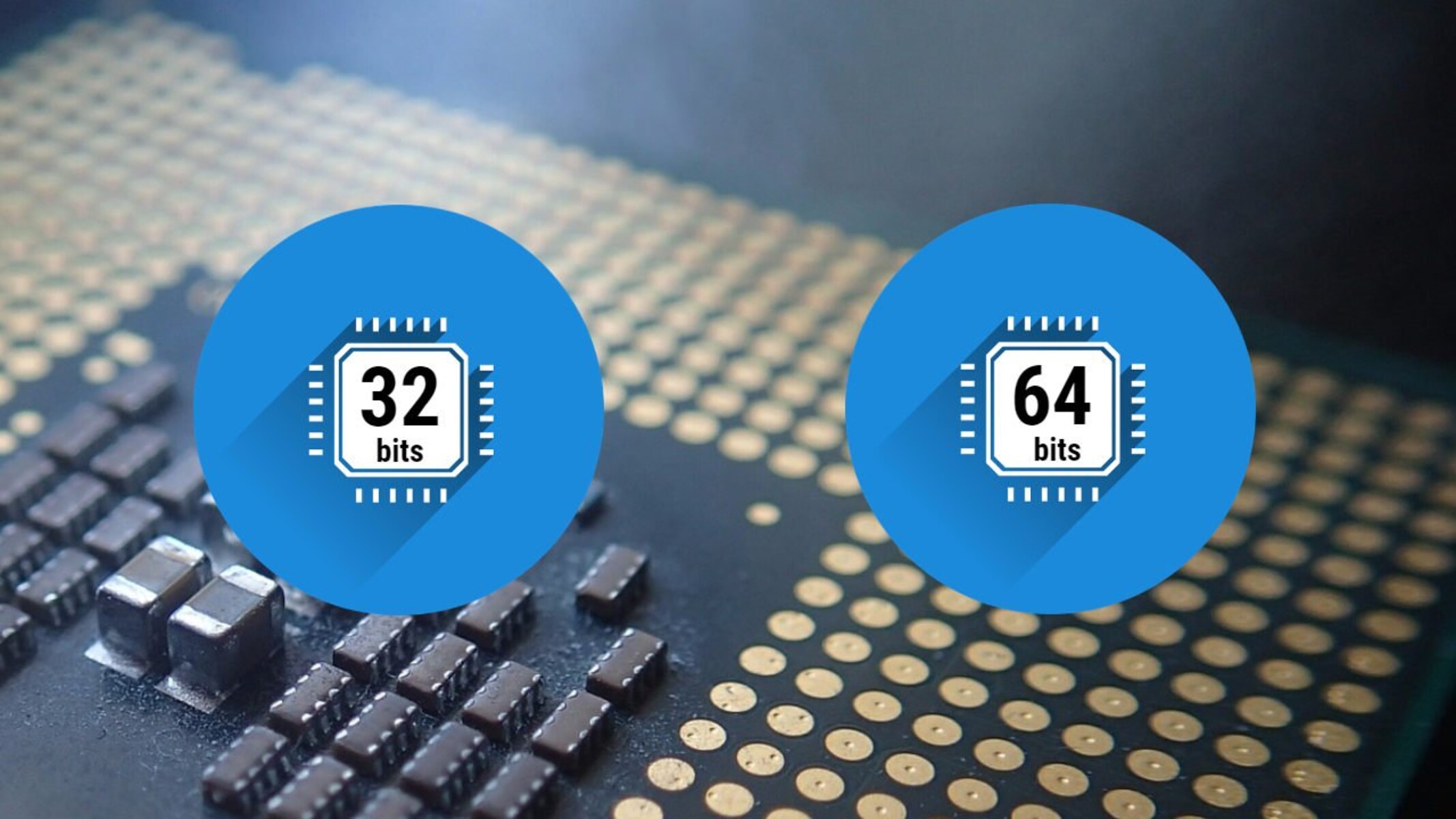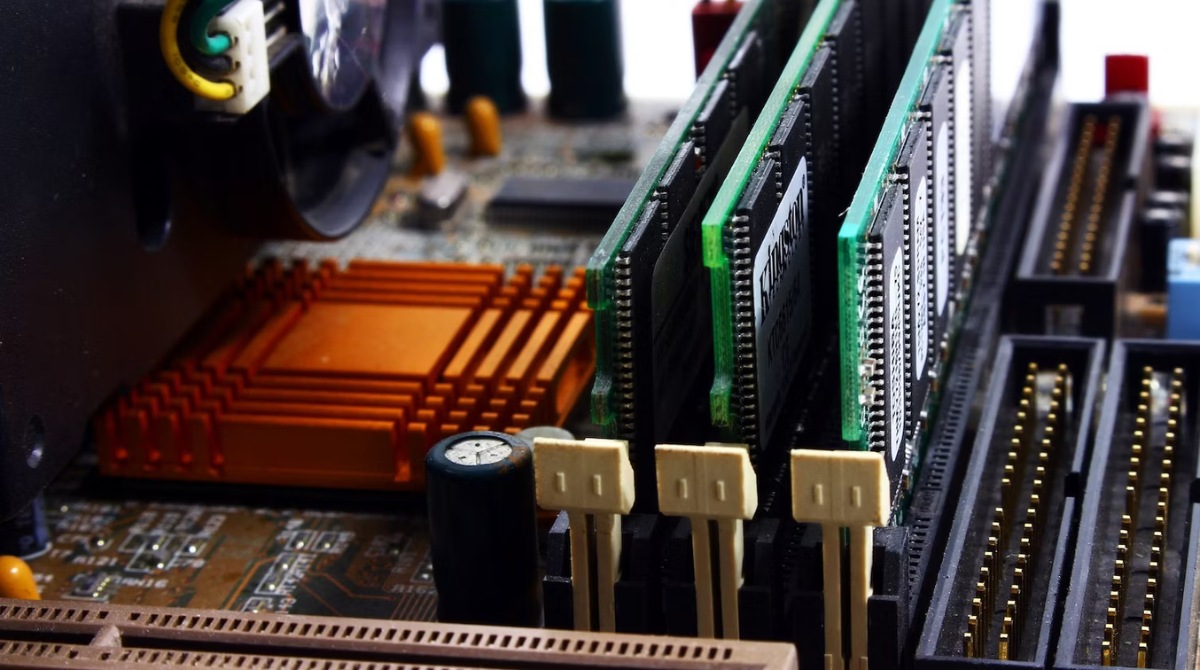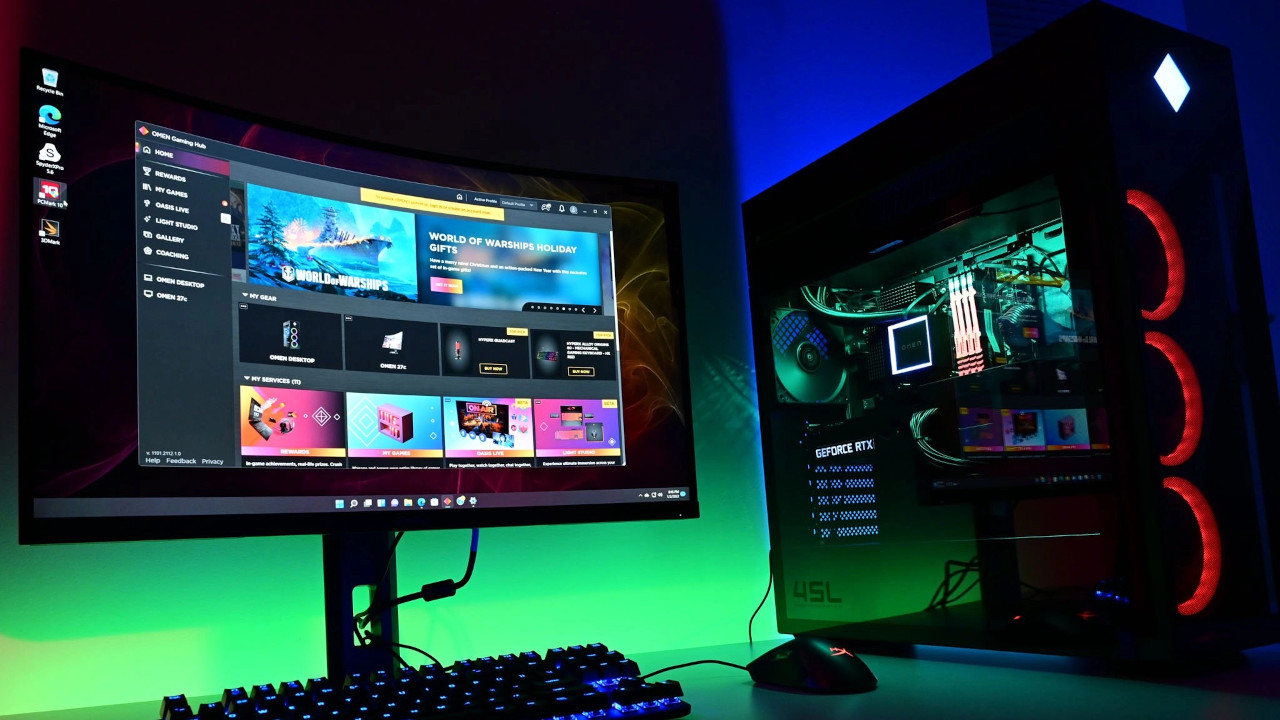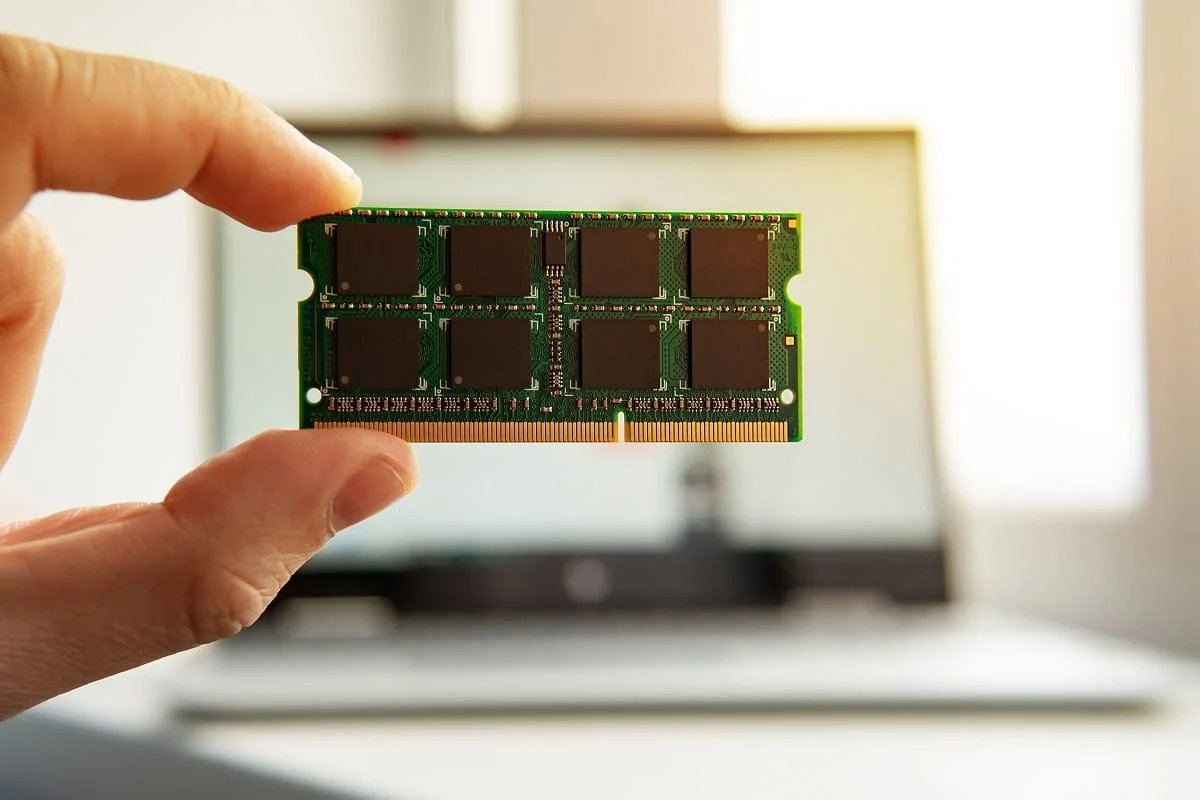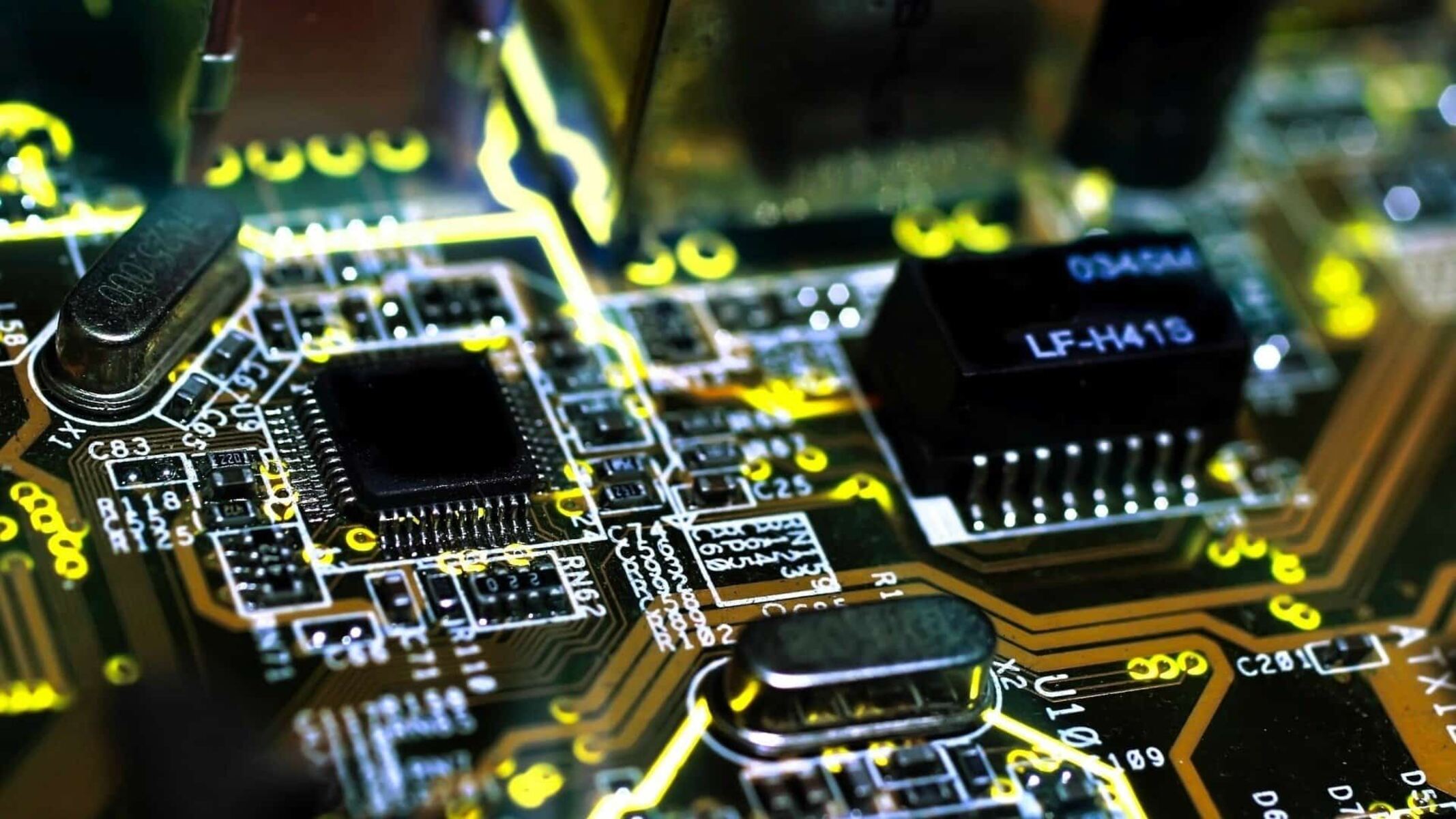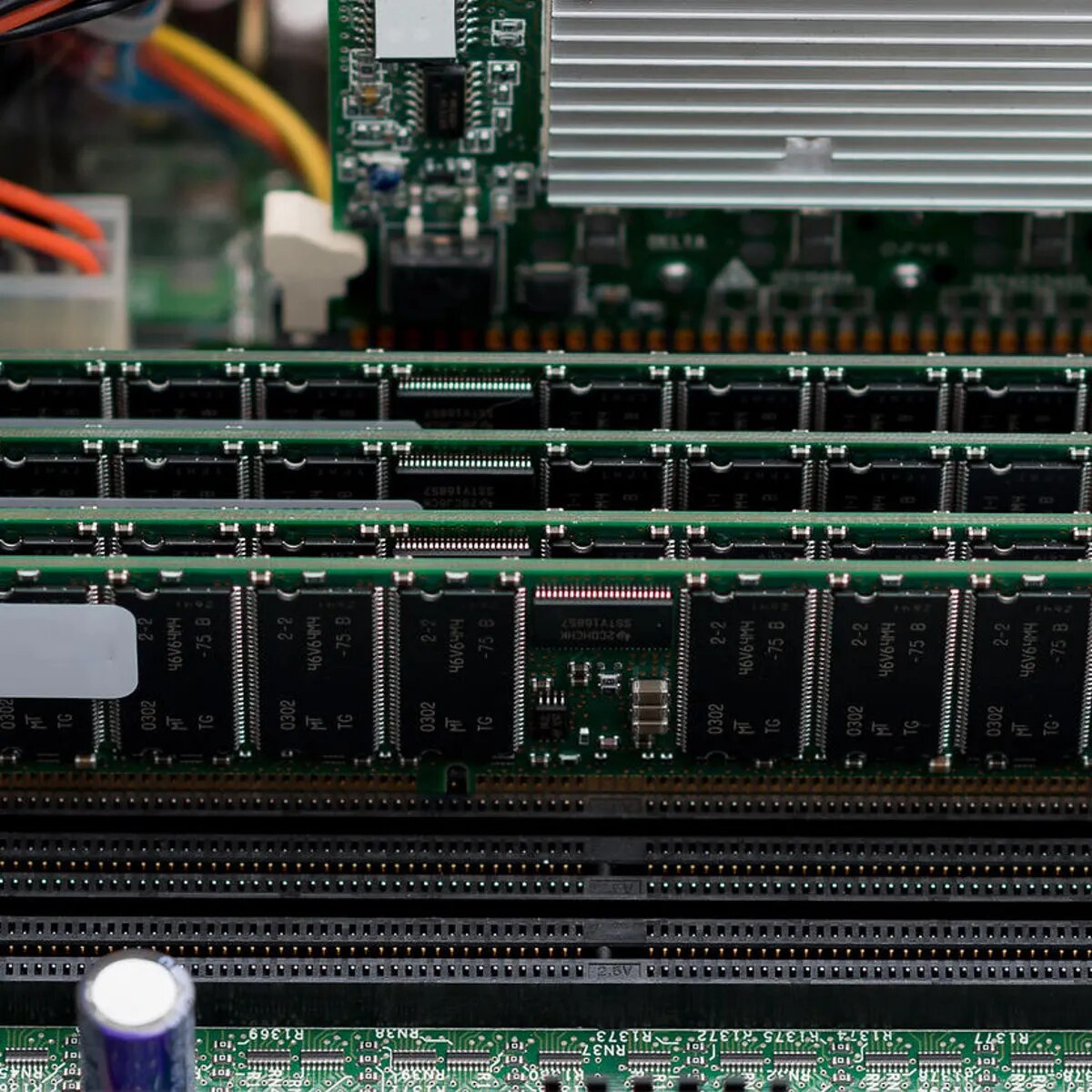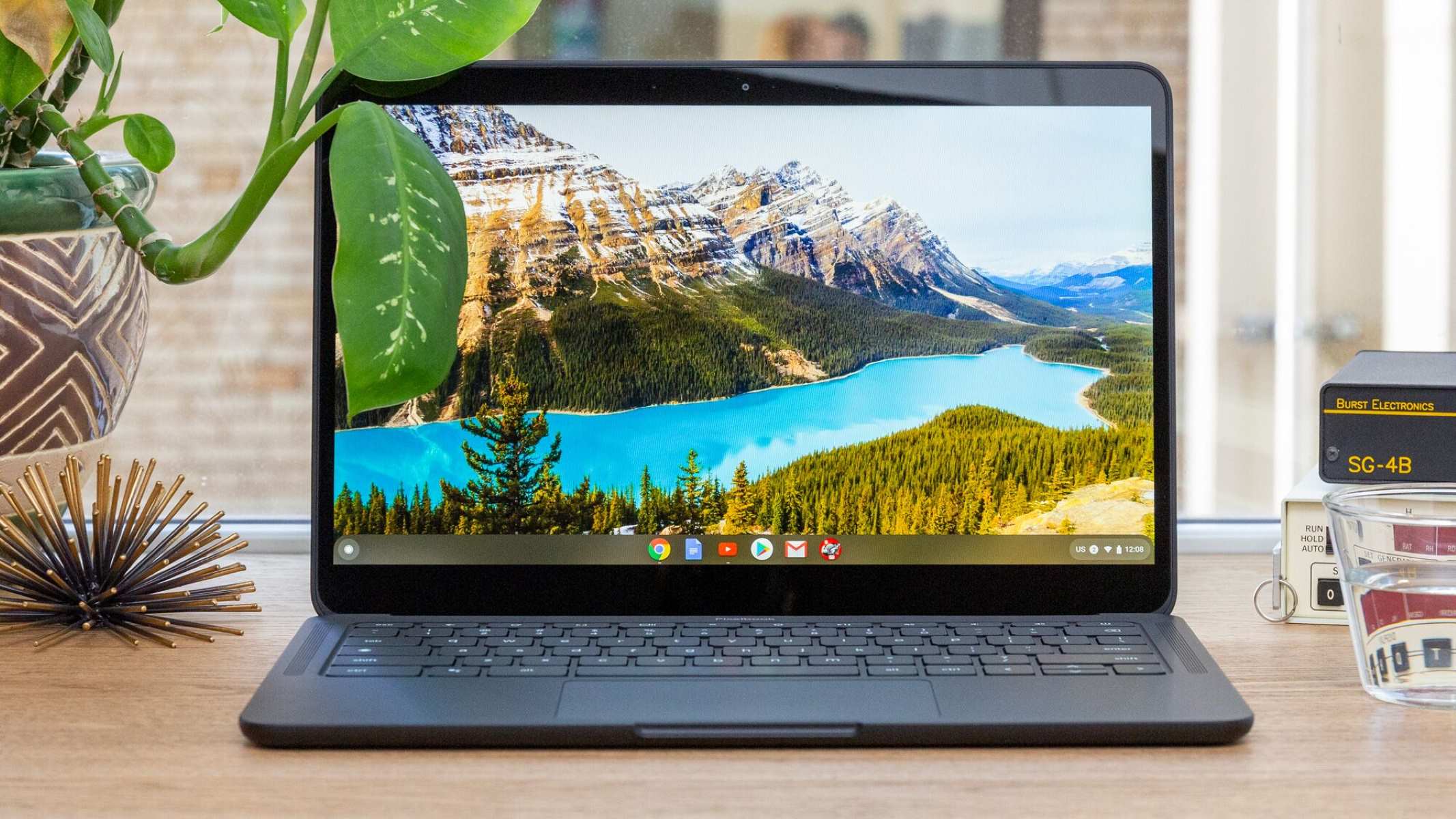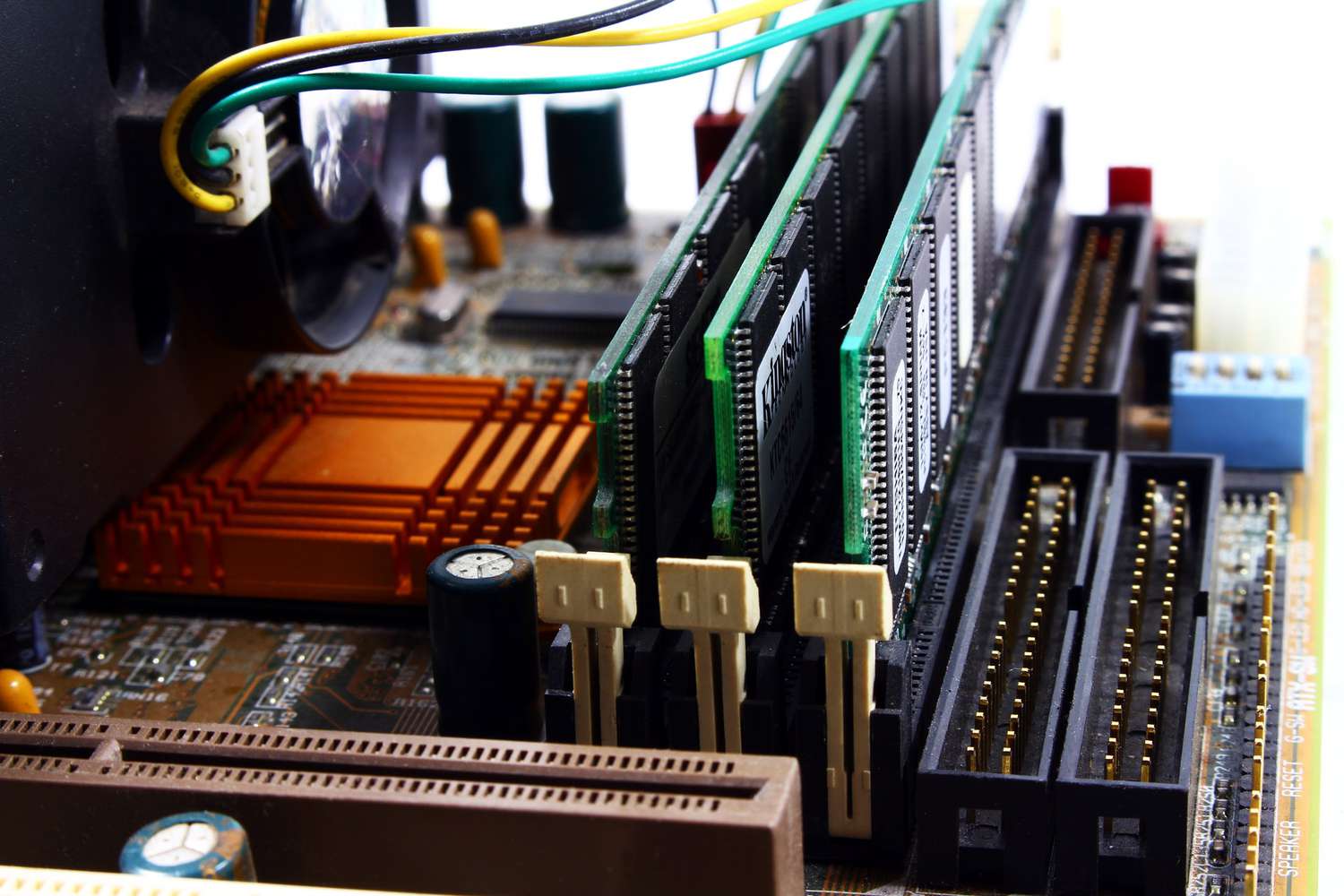Introduction
Welcome to our comprehensive guide on understanding the capabilities of a 32-bit processor when it comes to utilizing RAM. As technology continues to evolve at a rapid pace, it’s essential to understand the limitations and possibilities of different hardware components to make informed decisions.
When it comes to processors, the term “32-bit” refers to the number of bits the processor can handle in a single instruction. This designation has implications for the amount of RAM that can be effectively utilized by the system. RAM, or random-access memory, plays a vital role in storing and accessing data temporarily to facilitate efficient system operations.
In this guide, we will delve into the inner workings of a 32-bit processor and explore its relationship to RAM. We will examine the factors that determine how much RAM can be addressed by a 32-bit processor, and discuss the limitations that arise due to these constraints.
By the end of this guide, you will have a clear understanding of the limitations of a 32-bit processor and the factors that influence its use of RAM. Armed with this knowledge, you will be better equipped to make informed decisions regarding hardware upgrades and system requirements.
What is a 32-bit Processor?
A 32-bit processor refers to a type of central processing unit (CPU) architecture that can handle 32 bits of data in a single instruction. The bits here represent the binary digits (0s and 1s) that constitute the fundamental language of computers.
The 32-bit architecture has been widely used in personal computers and older generation smartphones. However, with advancements in technology, it has been largely replaced by 64-bit processors, which offer greater processing power and expanded memory capabilities.
But what exactly does it mean for a processor to be 32-bit? This designation primarily affects the CPU’s ability to handle memory addressing. In a 32-bit processor, the memory addresses are represented using 32 bits. Each bit can be in one of two states: 0 or 1. This allows the processor to address a maximum of 2^32 (4,294,967,296) unique memory locations.
It’s important to note that the term “32-bit” primarily refers to the size of the CPU’s data registers and its ability to perform arithmetic and logical operations on 32-bit data. This designation does not directly dictate the amount of RAM that can be utilized by the system. The amount of accessible RAM depends on various factors, which we will explore further in the following sections.
While 32-bit processors may no longer be at the cutting edge of technology, they still play a role in certain applications and systems where the need for high processing power is not of utmost importance. Understanding the parameters and limitations of these processors is essential for optimizing their performance and making informed decisions about their usage.
Understanding RAM and Addressable Memory
Before delving into the specifics of a 32-bit processor’s RAM limitations, it’s important to understand the concept of RAM and addressable memory. RAM, or random-access memory, is a type of computer memory that allows the CPU to temporarily store and access data that it needs to perform various operations. It is a critical component in ensuring smooth and efficient system performance.
In a computer system, RAM is typically comprised of physical memory modules, such as DIMMs (Dual Inline Memory Modules), that are inserted into the motherboard. These modules contain a series of memory cells that can store data and are arranged in an organized manner.
Each memory cell within the RAM has a unique address that allows the CPU to locate and access it. This ability to address individual memory cells is crucial for the efficient functioning of the system. The number of unique memory addresses that a processor can handle depends on its architecture, such as whether it is a 32-bit or 64-bit processor.
Addressable memory refers to the maximum number of memory cells that a processor can access. In the case of a 32-bit processor, with 32 bits in its memory addressing, the maximum addressable memory is 2^32 (4,294,967,296) bytes or 4 gigabytes (GB) of RAM.
However, it’s important to note that this 4 GB limit is not the full extent of the system’s available memory. Other hardware components, such as the graphics card and other peripheral devices, also require memory addressing space. As a result, the actual amount of addressable memory for the system will be less than the 4 GB theoretical limit.
To make the most effective use of this addressable memory, the operating system employs memory management techniques such as virtual memory. Virtual memory allows the system to utilize hard disk space and effectively extend the available memory beyond the physical RAM installed in the system.
By understanding the concept of RAM and addressable memory, we can now dive deeper into the limitations of a 32-bit processor and the amount of RAM it can effectively utilize.
Limitations of a 32-bit Processor
While 32-bit processors have served us well in the past, they do come with inherent limitations that can impact system performance and scalability. Here are some key limitations to consider:
1. Limited Addressable Memory: One of the primary limitations of a 32-bit processor is its restricted memory addressing capability. As mentioned earlier, a 32-bit processor can address a maximum of 4 gigabytes (GB) of RAM. This limitation becomes apparent in scenarios where larger amounts of RAM are required, such as in memory-intensive tasks like video editing or running complex software.
2. Lack of Full Utilization of Installed RAM: Another limitation is that a 32-bit processor cannot fully utilize the entire amount of RAM installed in a system, even if it exceeds the 4 GB limit. This is because a portion of the addressable memory space is reserved for other hardware components, including the graphics card and system resources. As a result, the effective usable RAM for the system may be significantly lower than the total installed RAM, limiting the system’s overall performance.
3. Limited Processing Power: 32-bit processors also have limited processing power compared to their 64-bit counterparts. This is due to the reduced size of the data registers and the maximum size of the data that can be processed in a single instruction. As a result, complex calculations and data-intensive operations may take longer to execute on a 32-bit processor, impacting overall system performance.
4. Compatibility Issues: With the transition towards 64-bit processors in recent years, there has been a shift in software development towards 64-bit applications. This means that certain newer software programs and operating systems may not be fully optimized or compatible with 32-bit processors, limiting the availability of the latest software features and updates.
These limitations highlight the need for upgrading to more powerful and capable processors, particularly in scenarios where larger amounts of RAM or enhanced processing power are required. While 32-bit processors still have their place in specific applications, it’s important to consider the limitations and plan for future requirements when making hardware decisions.
How Much RAM Can a 32-bit Processor Address?
A 32-bit processor architecture has a theoretical maximum limit of 4 gigabytes (GB) of addressable memory. This means that in ideal conditions, a 32-bit processor can directly access up to 4 GB of RAM.
However, it’s important to note that this limit is not a hard cap on the total amount of memory that can be installed in a system with a 32-bit processor. The limit stems from the number of unique memory addresses that a 32-bit processor can handle, which is 2^32 (4,294,967,296) addresses.
In practical terms, a portion of the available address space is reserved for other hardware components, such as the graphics card and system resources. This reduces the amount of addressable memory that the processor can use, effectively limiting the amount of RAM that can be fully utilized by the system.
Furthermore, there are certain system limitations that further reduce the amount of addressable memory. For instance, some older operating systems may have restrictions on the amount of RAM they can recognize and utilize, even on a 32-bit architecture.
These factors combined can lead to a situation where a system with a 32-bit processor may not be able to effectively utilize the full capacity of installed RAM. In some cases, the usable memory may be limited to as low as 3 GB or even less.
It’s important to note that the RAM limitations of a 32-bit processor can be overcome by upgrading to a 64-bit processor. A 64-bit processor architecture can address significantly more memory, with the theoretical limit being 2^64 (18,446,744,073,709,551,616) addresses, which is a staggering amount of memory.
While a 32-bit processor has limitations on the amount of RAM it can address and utilize, it’s still suitable for many everyday computing tasks and certain specialized applications that don’t require extensive memory or high processing power. However, for users who work with memory-intensive tasks or require access to larger amounts of RAM, upgrading to a 64-bit processor is highly recommended.
Factors Affecting Addressable RAM
While a 32-bit processor has a theoretical maximum limit of 4 gigabytes (GB) of addressable memory, several factors can affect the actual amount of RAM that can be utilized by the system. Here are some key factors to consider:
1. Operating System Limitations: The operating system plays a crucial role in determining how much RAM can be recognized and utilized by a 32-bit processor. Some older operating systems have limitations that prevent them from effectively utilizing the full capacity of installed RAM. For example, certain versions of Windows may have a maximum RAM limit of 3 GB for a 32-bit system.
2. Hardware Resource Allocation: A portion of the memory address space is reserved for other hardware components, including the graphics card and system resources. This reduces the amount of addressable memory for the processor. The specific amount of memory reserved can vary depending on the system configuration and the specific hardware components installed.
3. Addressable Memory Overhead: The way memory addressing works in a computer system involves some overhead that consumes a small portion of the addressable memory. This overhead is necessary for internal system operations and can further reduce the amount of effective addressable memory for a 32-bit processor. While the overhead is relatively small, it still contributes to the overall reduction in addressable RAM.
4. Memory Mapping Techniques: Memory mapping techniques, such as physical address extension (PAE) on certain operating systems, can enable a 32-bit processor to address more than the standard 4 GB limit. PAE allows the processor to utilize more than 4 GB of RAM by extending the memory addressing capabilities. However, it’s important to note that not all operating systems and applications fully support PAE, and there may be compatibility issues and performance implications when using this technique.
5. System Hardware Limitations: The physical limitations of the motherboard and the memory controller on a system can also impact the addressable RAM. Some older systems may have hardware limitations that prevent them from fully utilizing the theoretical maximum 4 GB limit of a 32-bit processor. It’s important to consult the system specifications to ensure compatibility and maximum supported memory capacity.
Considering these factors, it’s crucial to understand that the actual amount of RAM that can be effectively utilized by a 32-bit processor may be significantly less than the theoretical maximum of 4 GB. For users who require access to larger amounts of RAM, upgrading to a 64-bit processor is recommended, as it provides enhanced memory addressing capabilities and the ability to utilize larger amounts of RAM more effectively.
Workarounds for Limitations
While a 32-bit processor has certain limitations when it comes to addressing and utilizing RAM, there are workarounds that can help mitigate these limitations. Here are some common approaches to overcome the constraints imposed by a 32-bit processor:
1. Upgrade to a 64-bit Processor: The most effective solution to address the limitations of a 32-bit processor is to upgrade to a 64-bit processor. By switching to a 64-bit architecture, you can access significantly larger amounts of RAM and fully utilize the available memory resources. This is particularly beneficial for memory-intensive tasks such as video editing, gaming, and running complex software applications.
2. Use a 32-bit Operating System with Physical Address Extension (PAE): Some operating systems, such as certain versions of Windows and Linux, support a technique called Physical Address Extension (PAE). PAE allows a 32-bit operating system to address more than the standard 4 GB limit, enabling access to larger amounts of RAM. However, it’s important to check whether your specific operating system and applications fully support PAE before implementing this workaround.
3. Optimize System Resources: Since a portion of the memory address space is reserved for hardware resources, optimizing system resource allocation can help maximize the available addressable memory. This involves adjusting BIOS settings to allocate the appropriate amount of memory for system components and reducing unnecessary background processes to free up memory resources.
4. Employ Virtual Memory: Virtual memory allows the system to utilize hard disk space as additional memory, extending the available memory beyond the physical RAM installed in the system. By increasing the size of the virtual memory, the system can compensate for the limited physical RAM and enhance overall performance. However, it’s important to note that virtual memory is slower than physical RAM, so performance may be impacted.
5. Optimize Software Usage: Adjusting software settings and optimizing software usage can help conserve memory resources and minimize the impact of RAM limitations. This includes closing unnecessary applications and processes, making efficient use of caching mechanisms, and utilizing lightweight alternatives for memory-intensive software.
While these workarounds can provide temporary relief from the limitations of a 32-bit processor, they are not permanent solutions. For users who require consistent access to larger amounts of RAM and enhanced processing capabilities, upgrading to a 64-bit processor is recommended.
Conclusion
Understanding the limitations of a 32-bit processor and its impact on RAM utilization is crucial for making informed hardware choices and optimizing system performance. While a 32-bit processor has a theoretical limit of 4 gigabytes (GB) of addressable memory, several factors can affect the actual amount of RAM that can be utilized. Operating system limitations, hardware resource allocation, addressable memory overhead, memory mapping techniques, and system hardware limitations all contribute to the overall reduction in addressable RAM.
While workarounds such as upgrading to a 64-bit processor or utilizing virtual memory can assist in mitigating the limitations, they are not long-term solutions. Upgrading to a 64-bit processor provides enhanced memory addressing capabilities and allows for the utilization of larger amounts of RAM more effectively. It also ensures compatibility with modern software applications that increasingly rely on 64-bit architecture.
Ultimately, the choice between a 32-bit and 64-bit processor depends on the specific requirements of the computing tasks at hand. For casual everyday use, a 32-bit processor may be sufficient. However, for more memory-intensive tasks such as video editing, gaming, or running complex software, upgrading to a 64-bit processor is highly recommended to fully harness the benefits of increased RAM and improved processing power.
By understanding the limitations and workarounds for a 32-bit processor, you can make informed decisions regarding hardware upgrades and system requirements. Keeping up-to-date with the latest technological advancements and considering future needs will ensure that your computing environment remains efficient, scalable, and capable of meeting your demands.







